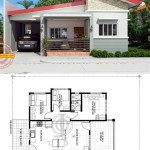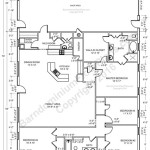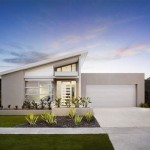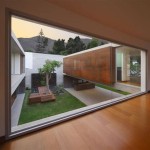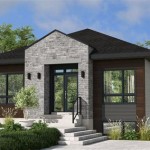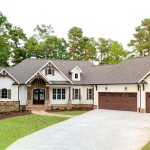Ranch House Plans With Garage: Functionality and Flexibility in Home Design
Ranch house plans, characterized by their single-story layout and open floor plans, have long been a popular choice for homeowners due to their accessibility and ease of maintenance. When combined with a garage, these plans offer a blend of convenience, storage, and enhanced property value. The inclusion of a garage isn't just about parking; it expands the utility of the home, providing space for workshops, hobby areas, and additional storage options. This article explores the various aspects of ranch house plans with garages, delving into design considerations, garage types, and the benefits they offer to homeowners.
The appeal of the ranch style lies in its simplicity and adaptability. Originally emerging in the mid-20th century, the design emphasizes horizontality, often featuring a low-pitched roofline and a wide footprint. This design philosophy naturally lends itself to integration with a garage, either attached or detached, seamlessly extending the living space and enhancing the functionality of the property.
Advantages of Integrating a Garage Into Ranch House Plans
Integrating a garage into a ranch house plan offers several key advantages that contribute to the overall practicality and value of the home. These benefits extend beyond mere vehicle storage and encompass aspects of convenience, security, and potential for future expansion.
First and foremost, a garage provides protection for vehicles from the elements. Exposure to sun, rain, and snow can significantly degrade a vehicle’s paint, interior, and mechanical components. A garage mitigates these risks, extending the lifespan of the vehicle and reducing maintenance costs. Moreover, it offers a secure location for parking, minimizing the risk of theft or vandalism, particularly in areas with higher crime rates.
Beyond vehicle protection, a garage also serves as a versatile storage space. Many homeowners utilize their garages to store tools, gardening equipment, seasonal decorations, and other items that would otherwise clutter the interior of the house. By designating the garage as a dedicated storage area, homeowners can maintain a more organized and clutter-free living environment. The garage can also be outfitted with shelving, workbenches, and other organizational systems to maximize storage capacity and create a functional workspace.
Furthermore, an attached garage offers increased convenience, especially during inclement weather. Homeowners can access their vehicles without having to step outside, providing a significant advantage during rain, snow, or extreme temperatures. This direct access to the home also enhances security, as it eliminates the need to walk across the yard at night. The attached garage can be designed with a direct entrance into the kitchen, mudroom, or other high-traffic areas, making it easy to unload groceries and other items.
Finally, a garage can increase the property value of a ranch house. Many potential buyers consider a garage a desirable feature, especially in regions where vehicle ownership is prevalent. The addition of a garage can make a property more attractive to a wider range of buyers, potentially leading to a higher sale price and faster turnaround time. The value added by a garage can vary depending on factors such as the size of the garage, its location, and the overall condition of the property.
Types of Garages Suitable for Ranch House Designs
Several garage types are compatible with ranch house designs, each offering different benefits in terms of space, accessibility, and aesthetic appeal. The choice of garage type depends on the homeowner's specific needs, budget, and the overall design of the house.
An attached garage is one of the most common and convenient options. It’s directly connected to the house, typically through a doorway leading into the kitchen, mudroom, or hallway. This provides easy access to the house and eliminates the need to go outside in inclement weather. Attached garages can be designed to blend seamlessly with the architecture of the ranch house, creating a cohesive and aesthetically pleasing look. They can be positioned at the front, side, or rear of the house, depending on the lot size and layout.
A detached garage, on the other hand, is a separate structure located away from the main house. This type of garage offers more flexibility in terms of placement and design. It can be positioned to maximize the use of the lot or to create a more private and secluded backyard space. Detached garages are often used as workshops, hobby areas, or storage spaces, as they offer more separation from the living areas of the house. They can also be designed to complement the architectural style of the ranch house, using similar materials and design elements.
A front-entry garage is positioned at the front of the house, facing the street. This type of garage is typically the most economical option, as it requires less driveway space and is easier to access. However, it can also dominate the front facade of the house and detract from its curb appeal. To mitigate this, homeowners can use landscaping and architectural details to soften the appearance of the garage and integrate it more seamlessly into the overall design. This includes adding windows, decorative doors, and landscaping elements.
A side-entry garage is positioned on the side of the house, typically facing the driveway. This type of garage offers a more subtle and discreet appearance compared to a front-entry garage. It can also help to create a more balanced and aesthetically pleasing facade. Side-entry garages are often used in conjunction with a circular driveway or a porte-cochere, providing convenient and stylish access to the house. The design allows for the garage door to be less prominent from the street.
A rear-entry garage is positioned at the rear of the house, typically accessed from an alley or a back driveway. This type of garage offers the most privacy and minimizes the visual impact on the front facade of the house. It's often used in urban areas or in communities with rear-alley access. Rear-entry garages can be designed to blend seamlessly with the backyard landscape, creating a more private and secluded outdoor space. The placement can also enhance the security of the property.
Design Considerations for Ranch House Plans with Garages
Designing a ranch house plan with a garage requires careful consideration of various factors, including the site layout, architectural style, and the homeowner's specific needs and preferences. A well-designed plan will integrate the garage seamlessly into the overall design of the house, enhancing its functionality and aesthetic appeal.
One of the primary considerations is the placement of the garage. As discussed earlier, the garage can be positioned at the front, side, or rear of the house, depending on the lot size, layout, and the homeowner's aesthetic preferences. The placement should be chosen to maximize the use of the lot and to create a balanced and visually appealing facade. It’s important to consider the driveway’s impact on landscaping and curb appeal.
The size of the garage is another important factor to consider. The size should be determined by the number of vehicles that need to be accommodated, as well as any additional storage or workspace requirements. A single-car garage is typically sufficient for one vehicle and some limited storage, while a two-car garage can accommodate two vehicles and provide more storage space. A three-car garage or larger may be needed for families with multiple vehicles or for homeowners who require a dedicated workshop or hobby area. It's also prudent to consider future needs when deciding on the size.
The architectural style of the garage should complement the style of the ranch house. This can be achieved by using similar materials, colors, and design elements. For example, a ranch house with a brick exterior may benefit from a garage with brick accents. The roofline of the garage should also match the roofline of the house, creating a cohesive and harmonious look. The design details can make a substantial difference in the overall aesthetics.
The garage door is a prominent feature of the garage and should be chosen carefully. There are many different styles of garage doors available, ranging from traditional to contemporary. The door should be chosen to complement the architectural style of the house and to enhance its curb appeal. Consider the material, color, and design of the door, as well as its functionality and durability. The garage door contributes significantly to the visual impression of the home.
Finally, the interior layout of the garage should be designed to maximize its functionality and usability. This includes incorporating shelving, workbenches, and other organizational systems to create a well-organized and efficient workspace. Consider the placement of electrical outlets, lighting, and other utilities to ensure that the garage is well-equipped for a variety of tasks. Planning the interior space effectively increases the garage's usefulness.
Ranch house plans with garages offer a practical and versatile housing solution. Careful consideration of garage type and design elements ensures the integration of the garage enhances the functionality and the aesthetic appeal of the home.

Contemporary Ranch Home Plan With Flex Room And Deep Tandem Ready Garage 69775am Architectural Designs House Plans

Ranch Style With 4 Bed 6 Bath Car Garage House Plans Country

Modern Open Ranch House Plans Blog Eplans Com

House Plan 45467 Ranch Style With 1680 Sq Ft 4 Bed 2 Bath

House Plan 73165 Ranch Style With 3109 Sq Ft 2 Bed Bath 1

One Story Craftsman Ranch Home Plan With Angled Garage 18297be Architectural Designs House Plans

House Plan 66419ll Ranch Ahmann Design

Ranch Style With 3 Bed 2 Bath Car Garage House Plans Small

Ranch House Plans With Open Floor Blog Homeplans Com

House Plan 85004 Quality Plans From Ahmann Design

